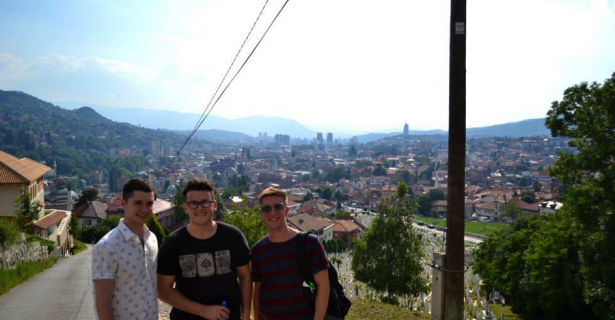My last few weeks at the Centre for Applied Nonviolent Action and Strategies (CANVAS) found me the most immersed in my work. As a research and analysis intern, my tasks varied a good deal, ranging from clerical responsibilities to long-term situation monitoring and case research. Throughout July, invested myself in two projects that I had found to be especially interesting and relevant to my academic focuses. One was a structured report on Cambodia; the other, a more ad hoc study of the developing situation in Armenia. The topic of Cambodia had occupied a good deal of my time with CANVAS. Beginning in June, I had been tasked with authoring a report detailing the current political and socioeconomic situation in the country, offering analysis and a political forecast for the use of activists and trainers. This coincided with the introduction of a controversial piece of legislation in the Cambodian National Assembly, which threatened to hinder the freedom and integrity of NGOs and labor unions. Although I was initially apprehensive about being tasked with an in-depth analysis of this small Southeast Asian state - my academic focus being security in Russia and Eastern Europe - after a week I was completely engrossed by the complex struggle for political primacy in Cambodia. Finishing the report provided a sense of closure for my time with CANVAS, but my interest in Cambodia, particularly as an example of a hybrid regime, has continued.
Armenia arose as a topic of interest for me later, following the massive Electric Yerevan protests that began in late June. A state-imposed hike in electrical tariffs led thousands of Armenians to flock into the streets of the capital, demanding greater accountability and a repeal of the hike. The situation was further complicated by its linkage to Russia: the Electric Networks of Armenia, which requested the hike, are owned by Inter RAO, a Russian state-owned company that has been accused of corruption and irresponsible practices. In Armenia, the protests were the result of long standing grievances, ignited by a misguided, top-down tariff imposition highly indicative of how out of touch the power vertical has become. In Moscow, they were viewed as yet another in a series of ‘color revolutions,’ ignited by outside agitators, and distinctly anti-Russian in nature. Following the protests, I monitored media on both sides, and reached out to Armenian activists and scholars to hear their opinions. I authored a piece surmising my findings, as well as the opinions of regional experts, and passed on the task of monitoring the situation to the intern who would replace me. As with Cambodia, my understanding and interest grew side by side. In this case, I deepened my understanding of Armenian politics, regional security in the South Caucasus, and Russia’s role in the region.
Even though my time with CANVAS is over, what I’ve learned will play a significant role in my academic career. Equally important are the relationships I built with my fellow interns and staff members, who taught me much about the inner workings of NGOs, the relationship between nonviolent resistance and human security, and the broader global project of grassroots democratization.


Add new comment